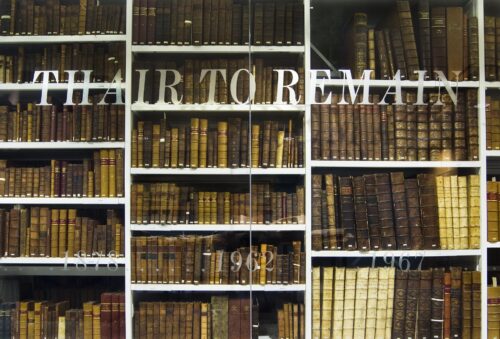
Over the past 6 months, I have had the pleasure of working with the Cultural Heritage Digitisation Service team as a DAMS (Digital Asset Management System: software used to manage digital heritage collections) Assistant, working to build the foundations for the migration of these collections from the current DAMS (LUNA) to the new Digital Collections Platform (Archipelago). After working with my fellow intern Isabelle to survey over 1,800 digital items managed by the Cultural Heritage Digitisation Service (CHDS), I began looking into the condition of 11 collections not managed by them. Needless to say it’s been a fascinating piece of work and has brought issues to light that haven’t yet been addressed or in some cases identified by the library staff.
While working on the CHDS-managed items I happened across the idea of exploring macros in Excel to automate my work and as an (almost) first-time coder, found the whole thing rather confusing. Thankfully, I persevered with it and developed a macro that allowed us to meet the project target sooner than anticipated and also removed one of the more monotonous aspects of the workflow! It seems that Excel macros, generally speaking, aren’t given enough attention, and I believe they could be beneficial for a number of aspects of the team’s work. Any process that requires filling in the same fields for a multitude of objects could be improved by the addition of a form macro, and processes which scrape data from CSV files could be fully automated with a little bit of attention and perseverance.
At the beginning of June I naively awaited the task of investigating the non-managed collections, unaware of exactly how deep below the surface the iceberg would reach. After an initial meeting with colleagues, the objectives of my internship became clear: meet with the curators of the collections, find out the issues with migrating each, and write a report to document it. The biggest challenge initially was wrapping my head around exactly who’s who in the library and where responsibilities lie.
After a week of over-diarising and breaking down the task into chunks I had my first meeting with a curator- Anna Hawkins for Art and the Thomson Walker collections. This was a challenging collection to start with and my worries about the immensity of the task grew. Thankfully, after a few more meetings (and some patience on the behalf of curatorial staff) I had all I needed to know and in the end not every collection turned out to be quite so complex! By the beginning of July I’d started to write my reports, and now they are all ready for the migration of these collections in the coming years.
Overall, working with CHDS has been full of surprises, in learning more about the university’s collections, developing unexpected skills and having the privilege to meet with a team of inspiring members of library staff who’ve all left their mark on me in some way or another. I’d like to extend my thanks to all those involved in writing up these reports. I can only hope that they’ll be as useful to the library team for the migration as writing them has been for my personal development and in building my confidence at work. My internship with CHDS has shown me the possibilities that can open up from working hard and I am hopeful for the future having had such a positive working experience.
By Ryan Shaw (DAMS Assistant)
Be First to Comment